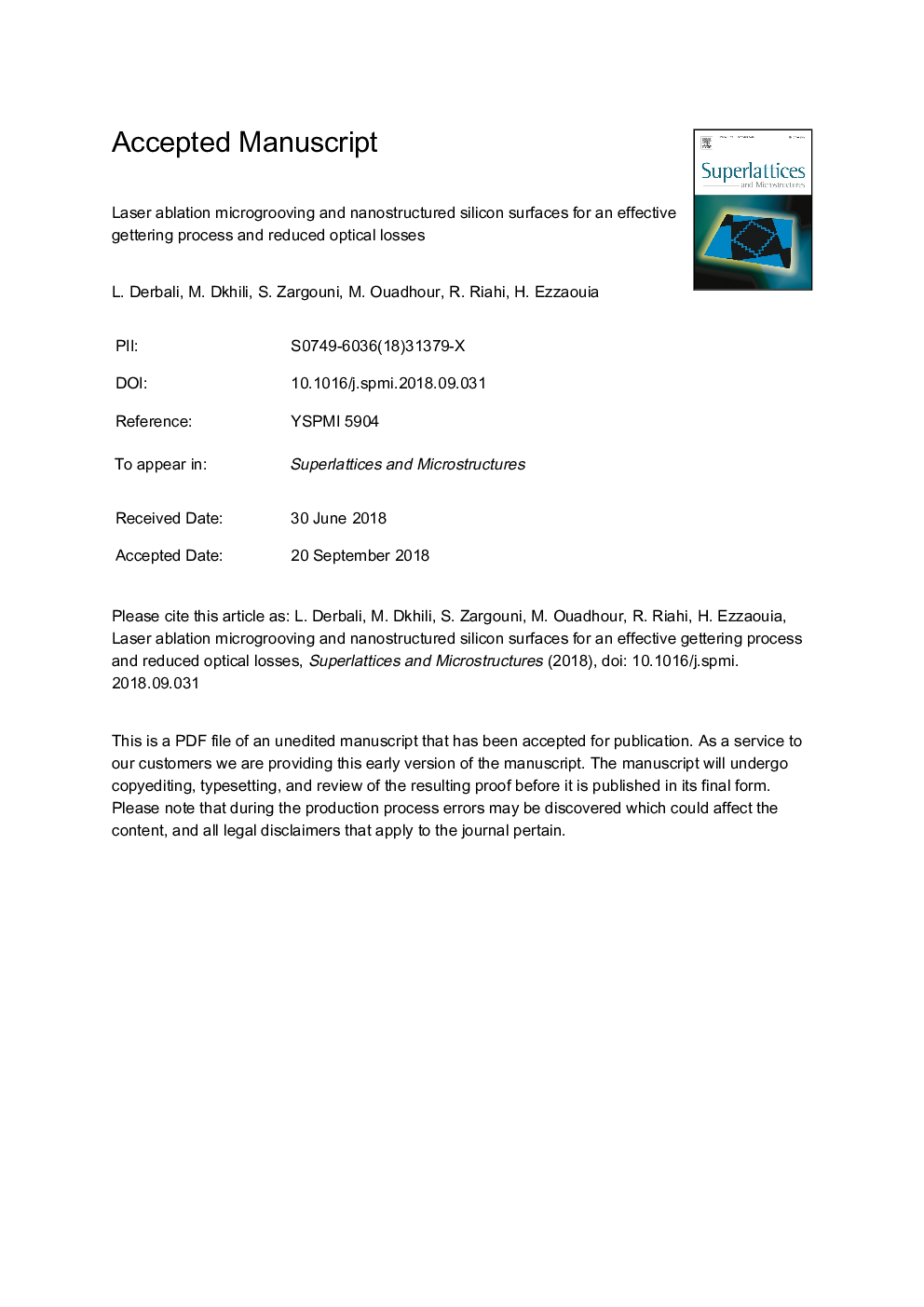| Article ID | Journal | Published Year | Pages | File Type |
|---|---|---|---|---|
| 11008967 | Superlattices and Microstructures | 2018 | 23 Pages |
Abstract
This work investigates the effect of laser microgrooved monocrystalline silicon surfaces to improve the gettering effectiveness of Si substrates for enhanced solar cell electrical properties. A combination of microgrooves and a grown sacrificial porous silicon layer (PSL), subjected to a heat treatment at different temperatures was considered to point out the crucial role of the microgrooves during the gettering procedure. This treatment leads to a significant decrease of the impurities concentration and recombination activities, in addition to a noticeable enhancement of light trapping, enabling an increased carrier collection probability. The microgrooves were made by means of NWR 213 laser ablation system. The PS layers were performed by a thermal activated stain etching method that will act as sacrificial trapping layers of the gettered impurities. The topography of the patterned surfaces with and without PSLs was investigated using field emission scanning electron microscopy (FESEM). As we expected, the combination of microgrooves with higher density at both surfaces and PSL improved obviously the optoelectronic properties of the processed solar cells. The minority carrier lifetime measured by means of the photoconductive decay method (PCD) was significantly increased from 9.2 μsec to 89 μsec. The Hall Effect measurement shows a significant increase of the carrier mobility. Moreover, the dark IV characteristics and the internal quantum efficiency (IQE) found to be improved. An apparent enhancement of the open circuit voltage Voc and current density Jsc was obtained indicating improved solar cell electrical properties.
Keywords
Related Topics
Physical Sciences and Engineering
Materials Science
Electronic, Optical and Magnetic Materials
Authors
L. Derbali, M. Dkhili, S. Zargouni, M. Ouadhour, R. Riahi, H. Ezzaouia,
